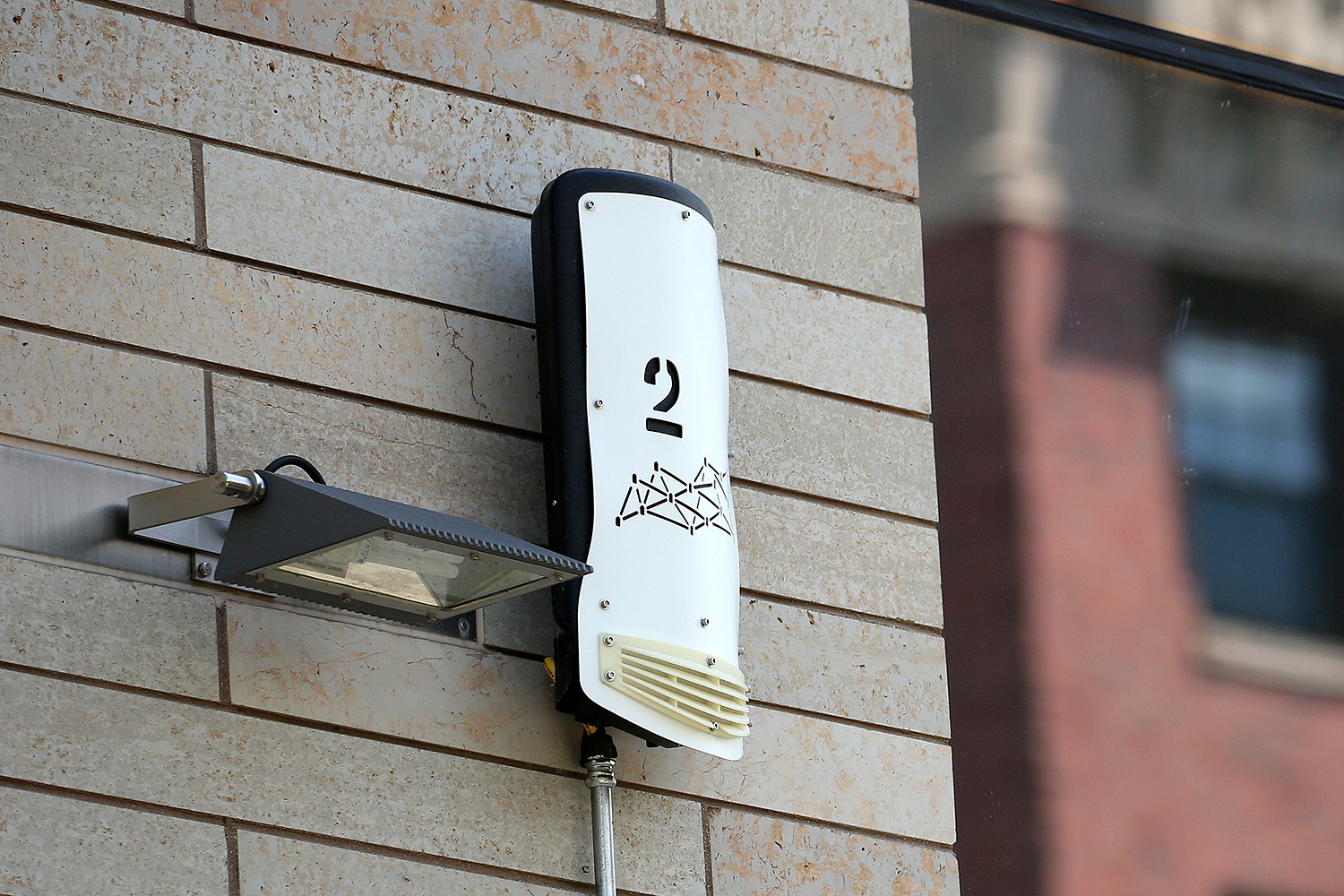Last year the city announced it would be getting an urban fitness tracker: the Array of Things, a network of sensors that could monitor everything from carbon monoxide to roadway temperature. And that data would go to the city's data portal, which has provided the foundation for a snow-plowing monitor, a food poisoning tracker, and other community-built projects.
Currently, a few sensors are up at the University of Chicago and Northeastern Illinois, to test the nodes in Chicago's challenging weather and to calibrate the data. And this week, it took another step closer to reality: a $3.1 million grant from the National Science Foundation to build the pilot program out into 500 nodes around the city.
"This funding is going to let us take the Array of Things from design, plan, and prototype," says Brenna Berman, the city's chief technology officer, "to the first full-scale pilot here in the city. We anticipate putting the first 50 nodes up in Q1 of 2016, and the additional full-scale pilot over the next two and a half years."
When I talked with Charlie Catlett, the AoT's principal investigator, and designers Douglas Pancoast and Satya Batsu, the ideas for the nascent project centered around environmental health. "The city already does this clever trick with the GPS tracking of buses, where they correctly observed that the movement of buses is a reasonably good proxy for the movement of the rest of traffic," Catlett told me. "That’s how they estimate congestion in the downtown area. If you combine that with emissions, you could get a sense of the impact of that traffic on air quality." (One idea for the AoT got spun into a controversy about privacy—using Bluetooth detection to measure foot traffic. But that won't be a feature of it going forward, in large part because the researchers decided that Bluetooth-enabled devices wouldn't make for a good sample for the data they wanted to collect.)
But as the Array of Things takes shape, Berman detailed how the city might use its data to change how city services work.
"We have some plans internally, with our own data team, with the ways it might help us improve service delivery. We're interested in how it might help us recognize standing water on the street, as we try to wrap our arms around the flooding problems that we have with the really heavy rains we're seeing in the environment today," Berman says. "We're interested in collecting better traffic data and road use data—especially around things like heavy trucks and the impact that they have on our road usage, and how that might change our road maintenance schedules. We think the data's going to help us adjust our service delivery models to make us more efficient."
Heavy trucks and buses—as City Hall found out when it floated additional fees on SUVs—account for most of the damage done to roadways, at least in terms of the damage caused by traffic. But right now the city doesn't have a detailed portrait of where and when heavy-truck traffic occurs.
"There's a sensor that's calibrated to pick up vibration—you can feel them, when one of those big trucks comes barreling by. This sensor is designed to track the vibrations that are produced by the weight of the vehicle that drives by. We already know that the heavier trucks cause heavier wear and tear on our roads," Berman says. "And heavy truck traffic—we don't understand those patterns, how they might change when construction patterns across the city change. By understanding that better, one, we might adjust our road repair schedule to take into account increased wear and tear in a certain area of the city, or we might alter the flow of that truck traffic to even out the wear and tear on the city. Maybe route trucks a different direction to get to that end point."
Chicago's robust civic-data community is awaiting the results. But Berman and her colleagues are just as interested in what they will do as well.
"I'm excited in the ways that the data's going to be used that we can't even guess at, which we've seen already with the open data that we've published through the data portal—uses of the data coming from community groups and civic hackers that we didn't even think of, that have provided benefits to residents and city governments that we haven't even planned for," Berman says. "We expect to see the same kind of unplanned-for benefit."



